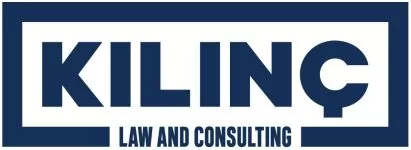- in Turkey
DEFINITION OF A DOMAIN NAME AND NATIONAL REGISTRATION METHOD
Domain Name, is an electronic address that enables access to the relevant website by identifying, and thus the real or legal person who owns the domain name is recognized. Pursuant to Article 3/1-v of the Electronic Communication Law No. 5809; it is defined in Turkish law as "Names identifying the internet protocol number used to determine the address of computers or websites on the internet".
There is more than one method of registering domain names in the international arena. In the mixed registration system adopted by Türkiye, both the principle of "first come, first served" and document-based registration system; the possibility of "proving that the person who will register the domain name has the right to the domain name to be registered with a document" are recognized. In this way, it is aimed to balance the interests of trademark owners and sign to be taken as a domain name and the interests of the persons who wish to register it as a domain name.
According to the Trademark Examination Guide ("Guide") published by the Turkish Patent and Trademark Office on its' website, the structure of a domain name consists of three parts (if there is a top-level domain name consisting of country codes such as tr., uk., it may have four parts). These are:
- The part indicating access to information: "www,
- Secondary level domain name: the part that constitutes the distinctive element of the domain name,
- Generic top-level domain name: Extensions such as "net., info., bel, .edu., av."
In this context, for example, the "gov" part in the domain name www.turkpatent.gov.tr constitutes the generic top-level domain name given for official institutions, the "turkpatent" part constitutes the secondary-level domain name, and the "tr" extension constitutes the country code top-level domain name.
LEGAL STATUS OF THE DOMAIN NAME
According to the prevailing opinion, domain names were only an address; today, this understanding has been left behind and it is seen that domain names have become a means of promotion, communication, and advertisement with the increase in economic activities on the internet. Although the legal status of the domain name is controversial in the doctrine, there are opinions that it may be a distinctive name, and sign such as a trademark and trade title. Domain names can be used for commercial purposes as well as non-commercial purposes. Therefore, although it will not always have the status of a trademark, trade title or business name, the use of a trademark itself as a domain name is frequently encountered in practice.
DISTINCTIVENESS AND SIMILARITY ASSESSMENT IN THE REGISTRATION OF DOMAIN NAMES AS TRADEMARKS
Pursuant to Article 5/1-ç of the Turkish Industry Property Law ("TIPL"), "identical or indistinguishably similar signs" cannot be registered as a trademark. In other words, a trademark should not be like another trademark as well as having the element of distinctiveness, and in case a domain name is registered as a trademark, the evaluation of these two elements in the domain name is given below.
a.Distinctiveness
In the registration of the domain name as a trademark, the condition of "distinctiveness", which is one of the conditions for trademark registration, must be satisfied. In the decision of the 11th Civil Chamber of the supreme Court dated 05.06.2015 and numbered 2015/2854 E. 2015/7855 K., it is stated that the trademark application for the domain name "ww.ishukuku.org" was rejected by the Re-examination and Evaluation Department ("RED"), which is the final decision-making body of the Turkish Patent and Trademark Office, and stated that "the domain name is department of law, and there are issues related to labour law in all sectors, the phrase will not create a "trademark perception" in the average consumer who sees the application mark, the phrase lacks distinctive power, it is also a phrase close to descriptive, it is not possible to grant the monopoly of use of this phrase to a single natural or legal person, and it is almost impossible to make it distinctive as a result of use" and upheld the decision of the RED.
Generally, domain name extensions such as "com", "net" and expressions such as "www", "http" do not add a distinctive characteristic to the phrase they accompany, and the evaluation is made on the basis of other element(s) other than these expressions. However, if the phrase constituting the second top level domain (Second top level domain– sTLD) of the relevant domain name and the generic top-level domain (Generic top level domain – gTLD) extension are of a nature that can be subject to a holistic perception together, the evaluation is made by taking this holism into consideration.
According to an example in the Guidelines, in the decision of the RED No. 2014-M-6254, in the comparison between the trademark "MNG" and "mngreklam.com.tr", the RED concludes; "As it is clearly stated in the trademark decision criteria, since the domain name extension "com.tr" does not have the quality of adding a distinctive feature to the phrase it comes with, the application was examined on the phrase "mngreklam".
Although the above-mentioned extensions generally do not have a distinctive character, it should be evaluated on a case-by-case basis whether the generic top-level domain name and country code top-level domain name parts have a distinctive contribution to the domain name in terms of visual or conceptual aspects within the whole trademark. According to another example given in the Guidelines, in the domain name where the heart sign and the phrase "anneyiz.biz" are adjacent to each other, it is mentioned that it would be correct to make an evaluation without separating the whole domain name since the word "anneyiz" and both the "heart sign" and the word "biz" form a unity.
b. Similarity
As we mentioned in the distinctiveness assessment, since the distinctive part of domain names is generally the second generic part, the signs in this part are also important in the similarity assessment. The similarity assessment between the relevant domain name and the trademark is evaluated from the perspective of the average consumer of the goods or services subject to the dispute, considering the visual, auditory and semantic similarities of the signs.
In the decision of the 11th Civil Chamber of the Supreme Court dated 11.04.2016 and numbered 2015/6580E. 2016/3961 K.; the plaintiff owns the trademark with the phrase "e-bebek" and the domain name "e-bebek.com", "ebebek.com", "e-bebek.com.tr". The defendant, on the other hand, registered the domain name "www.e-bebekanneleri.com" in its own name and the plaintiff claimed infringement of the trademark right. The Supreme Court states that the possibility of association is sufficient in the evaluation of similarity on the grounds that "it is intended to create association and confusions with the plaintiff's business and trademarks, and that average mother consumers may consider the phrase "e-bebekanneleri" as one of the serial trademarks or sales sites of the plaintiff".
IN CONCLUSION
Domain names are not only an internet address, but also one of the distinctive signs that can be registered as a trademark, and in this way, it is possible to easily provide purposes such as advertisement and promotion. In case the domain name is registered as a trademark, the possibility of confusion is evaluated within the scope of the IPL. In this evaluation, it is observed that the signs compared sometimes consist of domain names or being in the format of domain names or contain domain names.
Due to the nature of the domain name, the criteria to be used in the similarity assessment between the signs containing domain names and the trademarks consisting of word and/or figure elements may be specific. Therefore, in the registration of domain names, the "distinctiveness element", which is one of the conditions regarding the trademark, must be satisfied. As stated in the decisions of the Supreme Court and the RED, this element should be evaluated according to each case, and the domain name subject to the trademark application should create a "trademark perception" in the average consumer who sees this domain name.
In parallel with this conclusion, in the assessment to be made regarding whether the domain name is like another trademark in the event of registration of the trademark, the visual, auditory, and semantic similarities of the signs should be taken into consideration and the goods or services subject to the dispute should be evaluated from the perspective of the average consumer group.
The content of this article is intended to provide a general guide to the subject matter. Specialist advice should be sought about your specific circumstances.




